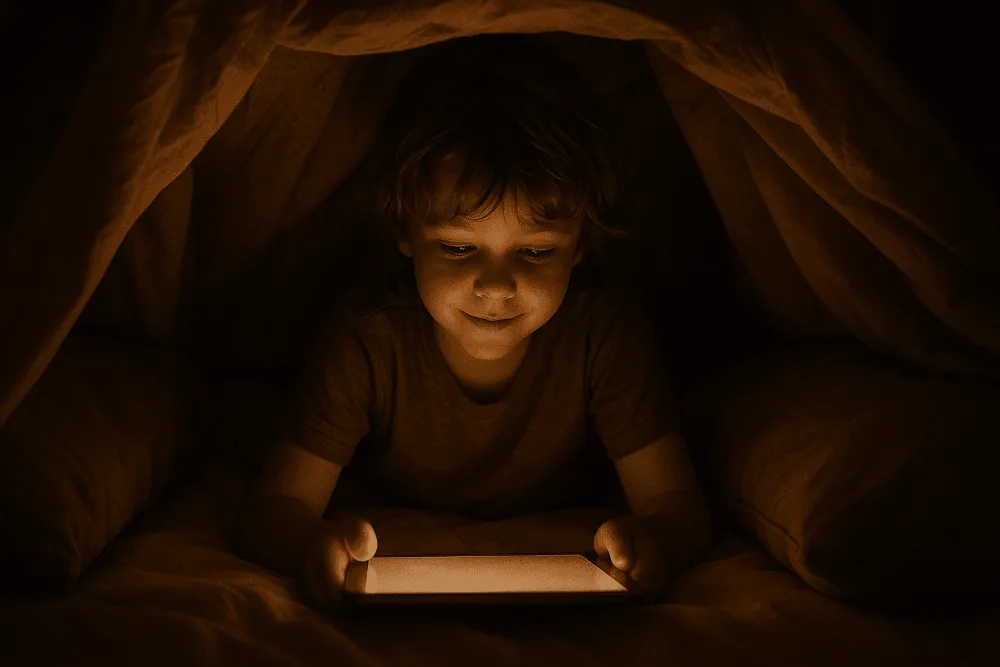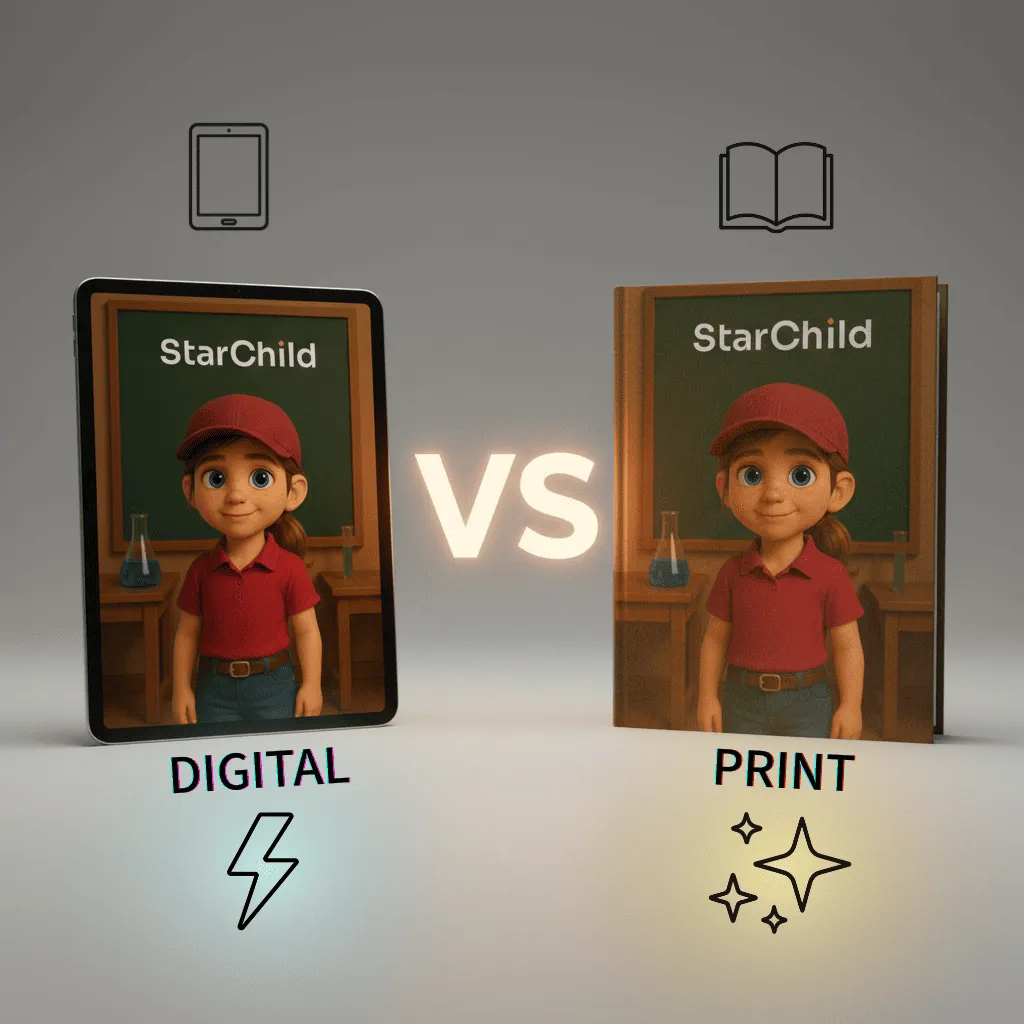If you’re wondering whether reading a StarChild story on an iPad is “as good” as reading the printed book, you’re not alone. We hear this a lot from parents who love books and worry about screens.
Short answer: the way you read with your child matters far more than what you read on. Read together, talk about the story, make it a ritual—do that on paper or pixels and you’re winning.
What really makes reading “work”
When kids fall in love with stories, it’s not because of the material the pages are made of. It’s because of:
- Connection (you + your child, together)
- Conversation (questions, predictions, pointing out details)
- Consistency (bedtime rituals, quick reads on the go)
Researchers call this kind of back-and-forth dialogic reading, and it’s strongly linked to language growth regardless of whether the book is print or digital. The technique is simple: ask questions, expand on your child’s answers, and turn reading into a two-way conversation.
So… do kids comprehend better on paper?
Sometimes, a little—if you compare plain print to busy, distracting e-books. But when the digital book is designed to support the story (gentle prompts, read-aloud features, word highlighting), the gap shrinks or even flips in favor of digital.
A meta-analysis in Review of Educational Research found that when e-books include story-congruent enhancements, they can improve comprehension compared to print.
In a direct test with preschoolers, children reading the same story on an iPad vs. in print were equally engaged; print had only a slight edge on a post-story quiz.
Zooming out, a children-focused meta-analysis of 39 studies reports that differences in comprehension largely depend on digital design features and adult support, not the screen itself.
Bottom line: a good story + a present adult = strong learning, no matter the medium.
How to make digital storytime feel (almost) like a book
A few tiny tweaks go a long way:
- Create “book-mode.” Turn on airplane mode, disable notifications, dim the screen. The device is now a storybook, not a toy.
- Use a book-like reader. Apple Books or Kindle with page-flip animations feels familiar and keeps focus on the narrative.
- Read dialogically. Pause to ask: “What do you think happens next?” “Why do you think she felt that way?” (More on dialogic reading here.)
- Leverage supportive features. Evidence-backed enhancements like read-aloud, word highlighting, tap-to-define/dictionary, and notes/highlights help vocabulary and understanding—as long as they serve the story (research summary).
- Make it a ritual. “This iPad is only for StarChild at bedtime.” Kids love clear rules and special routines.
When print still shines
We’re book people too. Physical books are keepsakes. They live on a shelf and invite re-reading. That matters.
Our favorite way to blend the two: start instantly with digital, then add the print edition as the forever copy. (If you’re waiting on delivery, you can even print a black-and-white version at home and let your child color the illustrations—a fun bridge activity.)
Will digital help my child read more?
For many families—yes. Surveys like the Scholastic Kids & Family Reading Report show e-books can make reading more convenient and, for some readers, more motivating. An instant library in your bag means more chances to read—in cars, waiting rooms, or while traveling.
And don’t forget the ebook-only perks:
- Built-in dictionaries make it easy to check unfamiliar words on the spot.
- Read-aloud and word highlighting help connect spoken and written words for developing readers.
- Adjustable text size, fonts, contrast, and night mode improve comfort and focus, reducing friction to read longer (parent-friendly guidance).
Several studies note vocabulary and comprehension gains when e-books include supportive features like dictionaries, word highlighting, and relevant, story-focused enhancements. See the meta-analysis on multimedia storybooks and classroom-oriented summaries from Reading Rockets.

The bottom line
It’s not paper vs. pixels—it’s presence vs. distraction. Read together, talk together, enjoy the story together. Do that on a couch with a hardcover or under the covers with an iPad, and your child gets the benefits either way.
If you want the fastest path: start with the digital (tonight), and add the physical for the keepsake shelf. The magic is the story you share, not the material it’s printed on.
